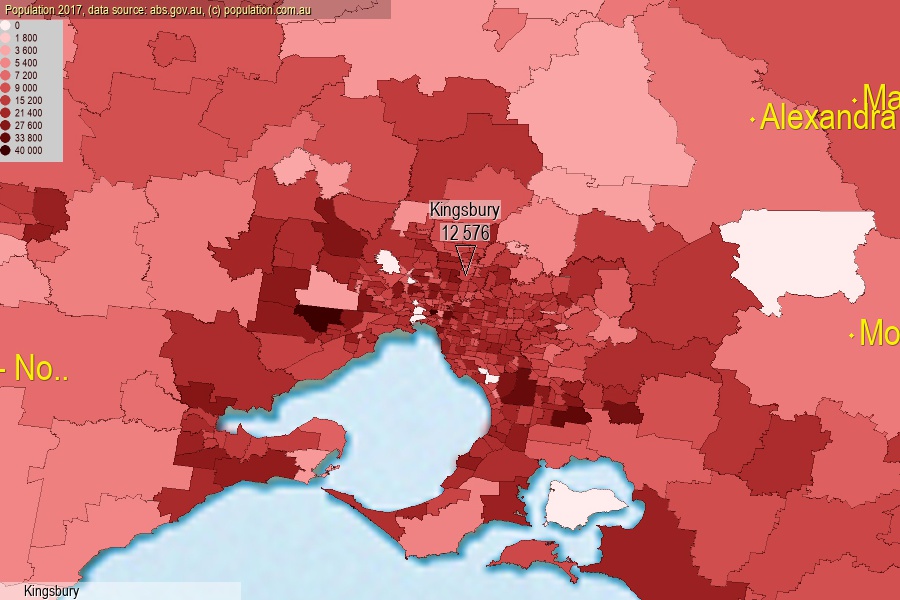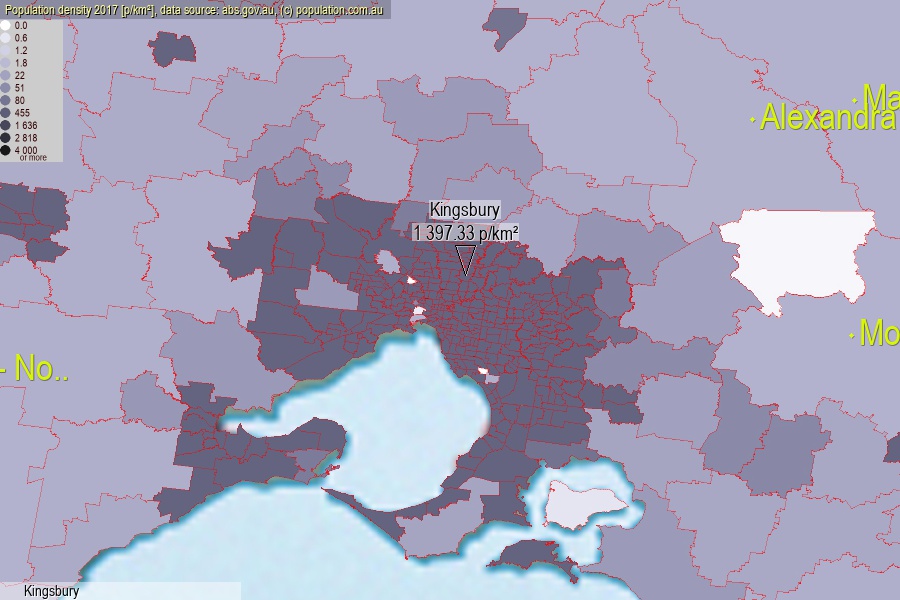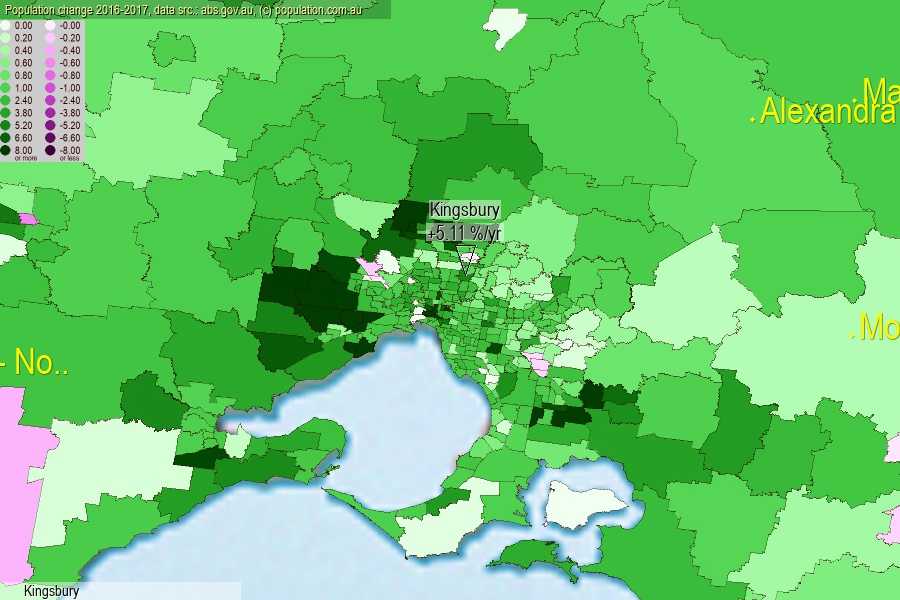 population.com.au
population.com.auLast official estimated population of Kingsbury (as Statistical Area Level 2) was 12 576 people (on 2017-06-30)[2]. This was 0.05% of total Australian population and 0.196% of VIC population. Area of Kingsbury is 9.00 km², in this year population density was 1 397.33 p/km² . If population growth rate would be same as in period 2016-2017 (+5.11%/yr), Kingsbury population in 2025 would be 18 732. [0]



Click to enlarge. Kingsbury is located in the center of the images.
Population [people], population density [p./km²] and population change [%/year] [2]
View borders » (new window) [4]
[1991-1992] -0.51 %/Yr.
[1992-1993] -2.16 %/Yr.
[1993-1994] -1.12 %/Yr.
[1994-1995] -0.34 %/Yr.
[1995-1996] +1.88 %/Yr.
[1996-1997] +3.19 %/Yr.
[1997-1998] +5.20 %/Yr.
[1998-1999] +1.45 %/Yr.
[1999-2000] +10.34 %/Yr.
[2000-2001] +4.97 %/Yr.
[2001-2002] +6.31 %/Yr.
[2002-2003] +7.13 %/Yr.
[2003-2004] +6.44 %/Yr.
[2004-2005] +8.28 %/Yr.
[2005-2006] +7.20 %/Yr.
[2006-2007] +8.90 %/Yr.
[2007-2008] +5.74 %/Yr.
[2008-2009] +5.69 %/Yr.
[2009-2010] +2.21 %/Yr.
[2010-2011] +1.62 %/Yr.
[2011-2012] +2.63 %/Yr.
[2012-2013] +2.19 %/Yr.
[2013-2014] +1.47 %/Yr.
[2014-2015] +1.86 %/Yr.
[2015-2016] +2.00 %/Yr.
[2016-2017] +5.11 %/Yr.
[0] Calculated with linear interpolation from officially estimated population
[1] Read more about SA2 and Australian Statistical Geography Standard (ASGS) on abs.gov.au
[2] Population data from Australian Bureau of Statistics (Population and density: 2017; change: 2016-2017)
[3] Digital Boundaries: Australian Statistical Geography Standard (ASGS) 2016.
[4] Border coordinates are simplifyed using Ramer-Douglas-Peucker algorithm.